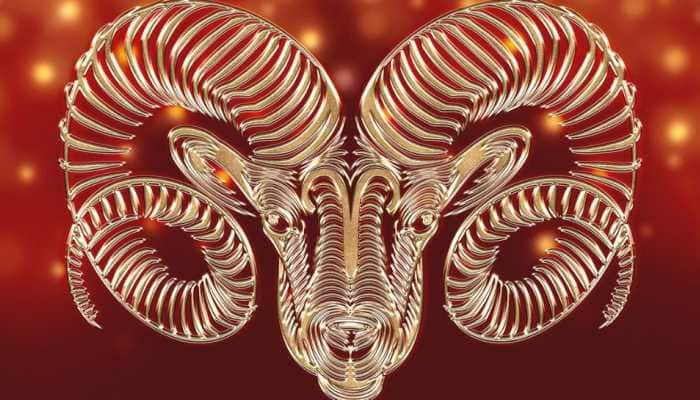'UP, Haryana Responsible For Rising Pollution In Delhi; GRAP 4 Measures To Continue': Gopal Rai
Despite the AAP government's ban on firecrackers and the 'Diya Jalao, Patakhe nahi' campaign, visuals from various parts of Delhi, including Lodhi Road, RK Puram, Karol Bagh, and Punjabi Bagh, showed fireworks lighting up the night sky on Sunday.
Trending Photos
)
New Delhi: Delhi Environment Minister Gopal Rai on Monday said that the preventive measures taken under GRAP Stage 4 will continue amid an alarming rise in pollution levels in the national capital post-Diwali. Addressing a press conference after reviewing the current air pollution crisis in Delhi, Rai said that the BJP governments in UP and Haryana are to be blamed for declining air quality and rising pollution. "Anti-pollution measures under GRAP IV regulations will remain enforced in Delhi until the next order of CAQM (Commission for Air Quality Management). Under this, the ban on BS-III petrol vehicles and BS-IV diesel vehicles will remain. All trucks, except those carrying essential goods and connected to essential services and CNG & electric trucks, will not be allowed to enter Delhi," Rai said.
Delhi Environment Minister also indicated that the government may re-consider implementing the odd-even rule if the air quality turns ''severe.''
On bursting for firecrackers in Delhi on Diwali, the Environment Minister said, "There is a ban on production, storage and sale of firecrackers in Delhi. The firecrackers were brought to Delhi from UP and Haryana. The police of Delhi, Haryana and UP are under the control of BJP and no common man can easily supply the firecrackers amid the monitoring of these three police forces. Some specific people have done this."
Rai made these remarks after a pollution review meeting with the officers of the Environment Department at the Delhi Secretariat. The meeting was called after the Air Quality Index (AQI) at several places in Delhi-NCR was recorded in the 'severe' or 'severe plus' category for the past several days.
#WATCH | Delhi Environment Minister Gopal Rai conducts pollution review meeting at Delhi Secretariat pic.twitter.com/bdlk2UZcIk — ANI (@ANI) November 13, 2023
Additionally, the post-Diwali celebrations in the region have sparked concerns for the residents in the area and its adjoining places. Speaking to ANI about the review meeting, Rai earlier said, "The review meeting will include discussions on the overall air quality situation in Delhi-NCR. We will conduct discussions on the status of the different enforcement works that have been implemented to tackle the pollution."
Thick Smog In Delhi
A thick layer of smog engulfed Delhi and its adjoining National Capital Region (NCR) on Monday morning, a day after people celebrated Diwali by bursting crackers across the city and contributing to the deteriorating air quality. Pictures and videos from various parts of Delhi showed a thick haze covering the roads, significantly reducing visibility and making it difficult to see beyond a few hundred meters.
Despite the AAP government's complete ban on firecrackers and the 'Diya Jalao, Patakhe nahi' campaign, visuals from various parts of Delhi, including Lodhi Road, RK Puram, Karol Bagh, and Punjabi Bagh, showed fireworks lighting up the night sky on Sunday.
#WATCH | People burst firecrackers in Delhi on the occasion of #Diwali
Visuals from Punjabi Bagh. pic.twitter.com/h6oM71vR1t — ANI (@ANI) November 12, 2023
In the early morning hours (Monday), 'poor' air quality was observed around the Lodhi Road area at 5:54 am and the Rajghat area at 6:05 am, as per the CPCB. Additionally, firecracker waste was seen in various places post-Diwali celebrations. According to the CPCB, the Air Quality Index (AQI) in various parts of Delhi, recorded at 8 am, is as follows: Shadipur and Anand Vihar AQI fall under the very poor category, with readings of 321 and 312, respectively. The AQI at Wazirpur, ITO, Burari crossing, and Anand Vihar all fall under the poor category, with readings of 281, 263, 279, and 296 respectively.
Delhi recorded an AQI of 312 on Diwali last year, 382 in 2021, 414 in 2020, 337 in 2019, 281 in 2018, 319 in 2017 and 431 in 2016, according to Central Pollution Control Board data. On November 12, according to the data from the CPCB, the AQI in Anand Vihar was at 266, while at RK Puram it was recorded at 241 on Sunday morning at 07.00 am. Similarly, in the Punjabi Bagh area it was at 233, and in the ITO area, it was recorded at 227.
Congress MP Manish Tewari took to social media X and posted, "Last night in Lutyens Delhi firecrackers were bursting till 2 AM in the morning with sparklers, bombs, rockets and every other firecracker used on Deepawali on full & ferocious display. Did the Supreme Court ban Firecrackers?" Trinamool Congress MP Saket Gokhale also wrote to the Delhi police on Monday seeking information on cases filed against the bursting of firecrackers on Diwali night.
Blanket Ban On Firecrackers In Delhi
Recently, Arvind Kejriwal-led AAP government in Delhi imposed a complete ban on firecrackers. In the wake of the pollution situation, the government even considered the idea of 'artificial rain' to tackle the foul air in the city, until sudden rainfall brought a major respite, lowering the pollution level.
Previous data related to pollution shows that since the last week of October, the national capital's air quality has been at its worst. The concentration of PM 2.5 in the city has been recorded at 20 times the limit prescribed by the World Health Organisation, prompting the city government to order the closure of all primary classes and restrict the entry of trucks.
The air quality index is an indicator to measure air pollution. An AQI between zero and 50 is considered 'good', 51 and 100 'satisfactory', 101 and 200 'moderate', 201 and 300 'poor', 301 and 400 'very poor', 401 and 450 'severe' and above 450 'severe plus'.







)
)
)
)
)
)
)
)
)
)
